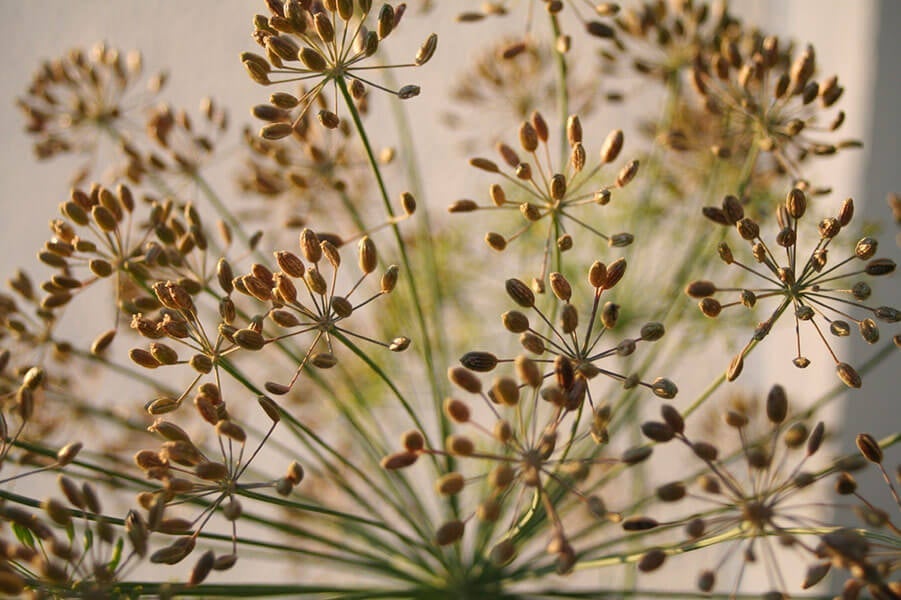In summer, herb gardeners get a delicious payoff for all of their efforts. Oddly enough, this is when some gardeners become timid, unsure what to do next because the plants are so full and beautiful, it seems a shame to trim them. Never fear! Here is some advice for clipping with confidence.
Before starting, make sure your plants are well watered and not stressed. Healthy, happy herbs yield the best flavor. A few hours after watering, or the following morning, gather your gloves and sharp clippers (so you don't mangle the stems). Have something to carry the clipped herbs: a bucket, a large basket, or grocery bags. Then snip away.
Perennial herbs such as oregano, sage, and thyme are the simplest to harvest. Cut about one-third to one-half of the plant's height any time during the growing season.
Basil and other annual herbs grown for their leaves need regular harvesting during the summer. By mid-summer plants are near their final height. Most annuals need periodic harvesting to keep them from going to seed. Clipping lets them focus on growing leaves.
Harvest edible herb flowers such as dill, lavender, borage, and tarragon just after the flowers open. At that point, the heads will be firm and at maximum flavor. Handle them gently to minimize damage.
Gathering dill, coriander (cilantro), and other seed producers requires more careful timing. Watch for the seeds to plump and turn brown. Clip the heads immediately or you'll lose your harvest to hungry birds or high winds.
For all your herbs, harvest only parts that are in good condition. Leaves, seeds, or flowers that are damaged or wilted won't improve after they're clipped.
To preserve herbs for cooking, lay the stalks in a single layer on an absorbent towel that you've placed on a flat surface. Allow them to air-dry for 6-8 days. Once the leaves become dry and crackly, store them in an airtight container away from light. Basil is okay dried, but doesn't hold its flavor as well as oregano, dill, and many other herbs.
When drying herbs, it's important to prevent mold. Each day during the drying, fluff the herb stalks to expose new parts to the air. If you live in a hot, humid area, take advantage of the high temperatures in an outbuilding or the trunk of your car (left in the sun) for "express drying."
You can count the rules of herb harvesting on one hand: water before you start, make sharp cuts, keep the herbs clean, dry them quickly, and store them away from light and moisture. That's all there is to it!







 Herbs
Herbs
 Vegetables
Vegetables
 Fruit
Fruit
 Flowers
Flowers
 Succulents
Succulents

